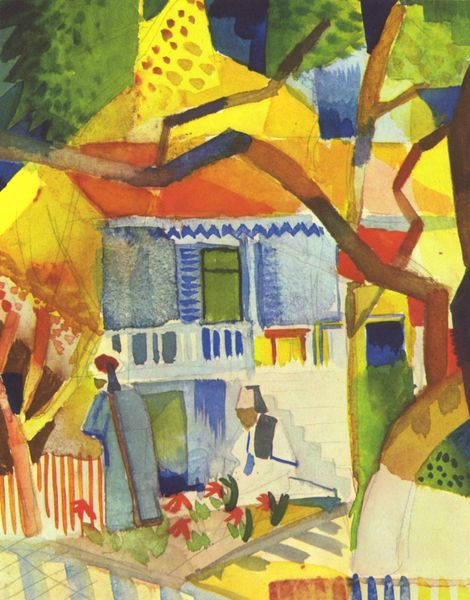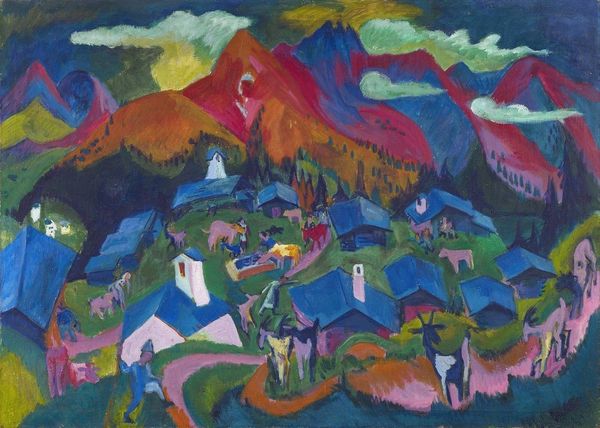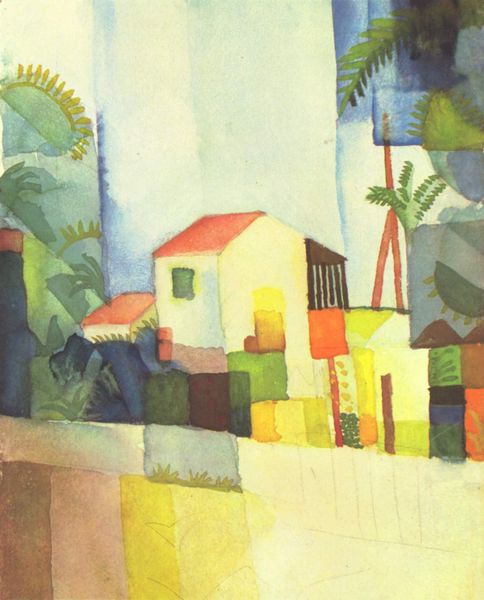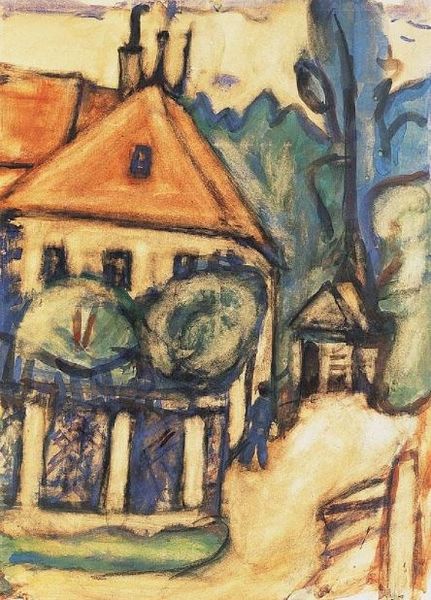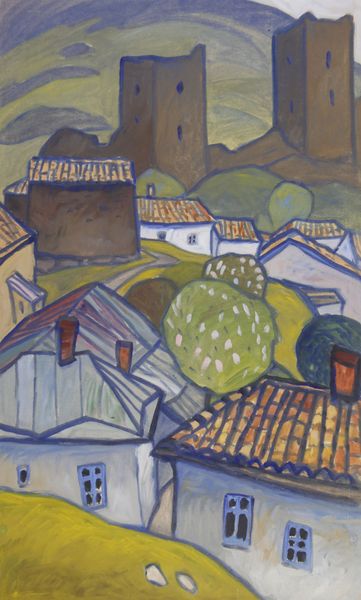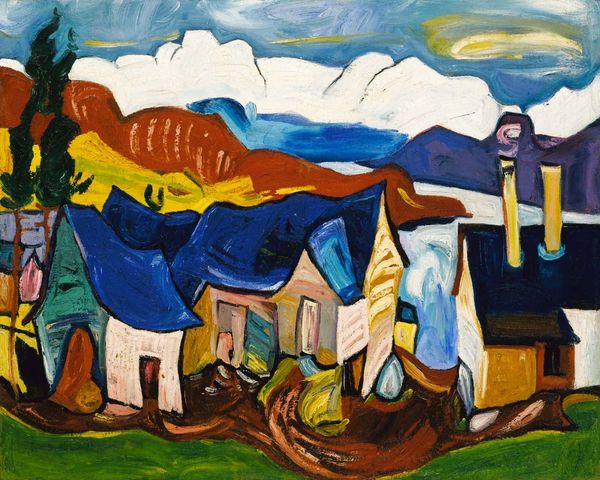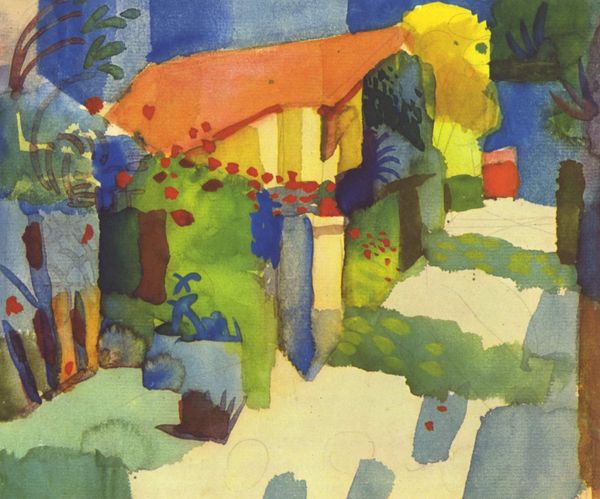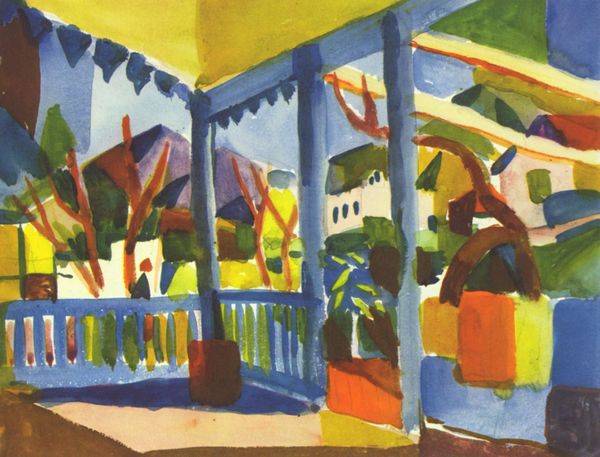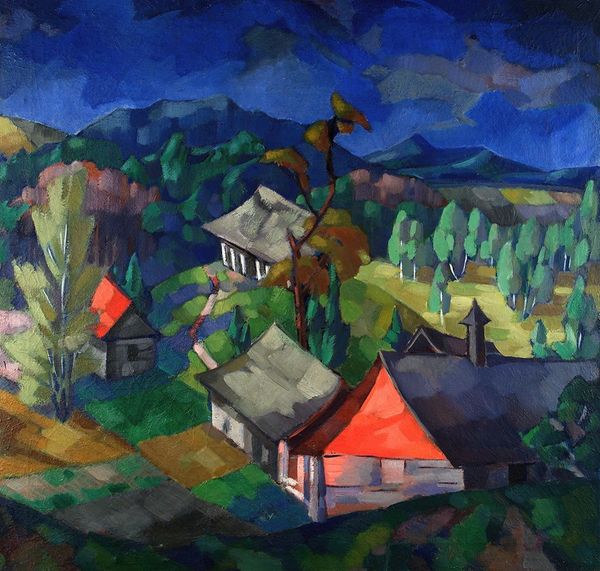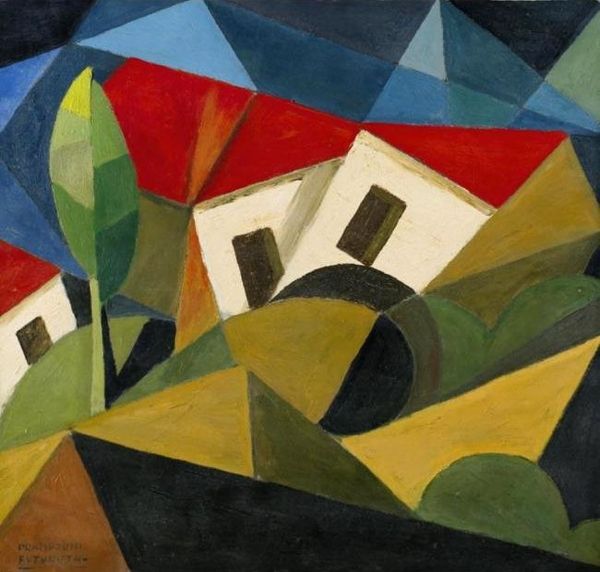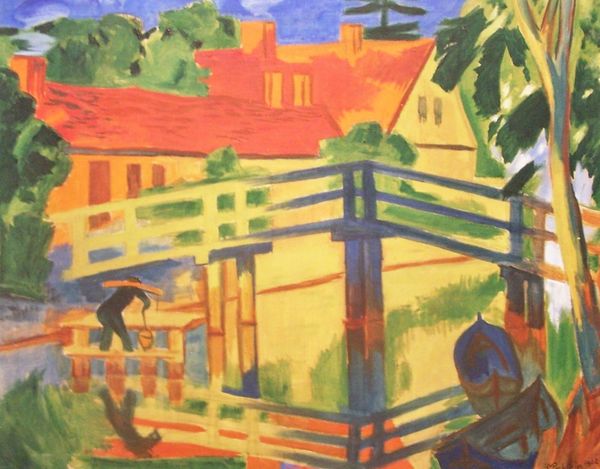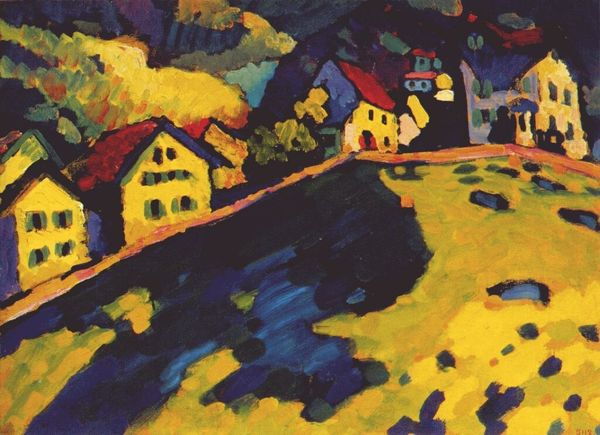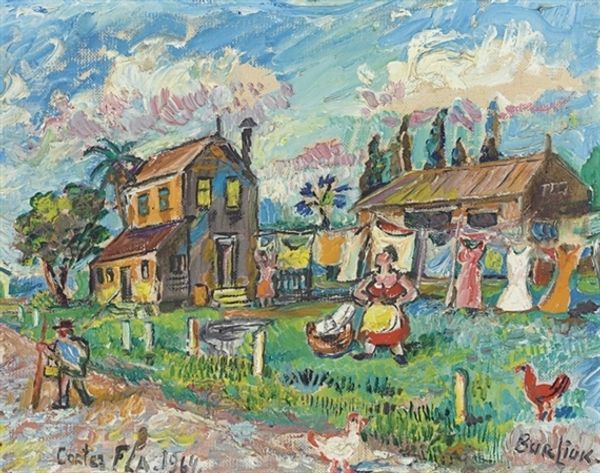
Dimensions: 26 x 21 cm
Copyright: Public domain
Editor: This is August Macke’s "St. Germain near Tunis," a watercolor painting from 1914. I'm immediately drawn to how the geometric shapes and vibrant colours create a dreamlike impression of the landscape. What’s your take on it? Curator: Well, on the surface, it is a picturesque landscape but remember it was created in 1914, just before the start of WWI. So how do we read a seemingly simple landscape during a period ripe with social upheaval and colonialism? Macke visited Tunisia, part of the French colonial empire at that time. Do you think he critically examines that dynamic? Editor: Hmm, that's an interesting point. The vibrant colours almost mask that context. Maybe I’m too quick to interpret it aesthetically? Curator: Exactly. And consider that Macke was associated with German Expressionism. It was a time when many artists began questioning the power structures in Europe, though some participated in and benefitted from them at the same time. Perhaps, these geometric forms disrupt any cohesive and conventional representation of landscape and invite viewers to reconsider their perspectives on place, identity, and belonging? How might the figures seemingly trapped by the architecture speak to colonial confines, or his own position as tourist versus occupant? Editor: So, rather than simply viewing this as a beautiful landscape, we should consider the complex historical context in which it was made, and how those themes of colonialism, and societal shifts were reflected, perhaps subtly, in the artist's choices of color, form, and composition? Curator: Precisely. The painting serves as a poignant reminder of the intricate relationship between art, history, and society. Editor: This has really broadened my perspective! I'll definitely look at art differently now. Thanks for helping me see past the aesthetic to deeper meanings.
Comments
No comments
Be the first to comment and join the conversation on the ultimate creative platform.
